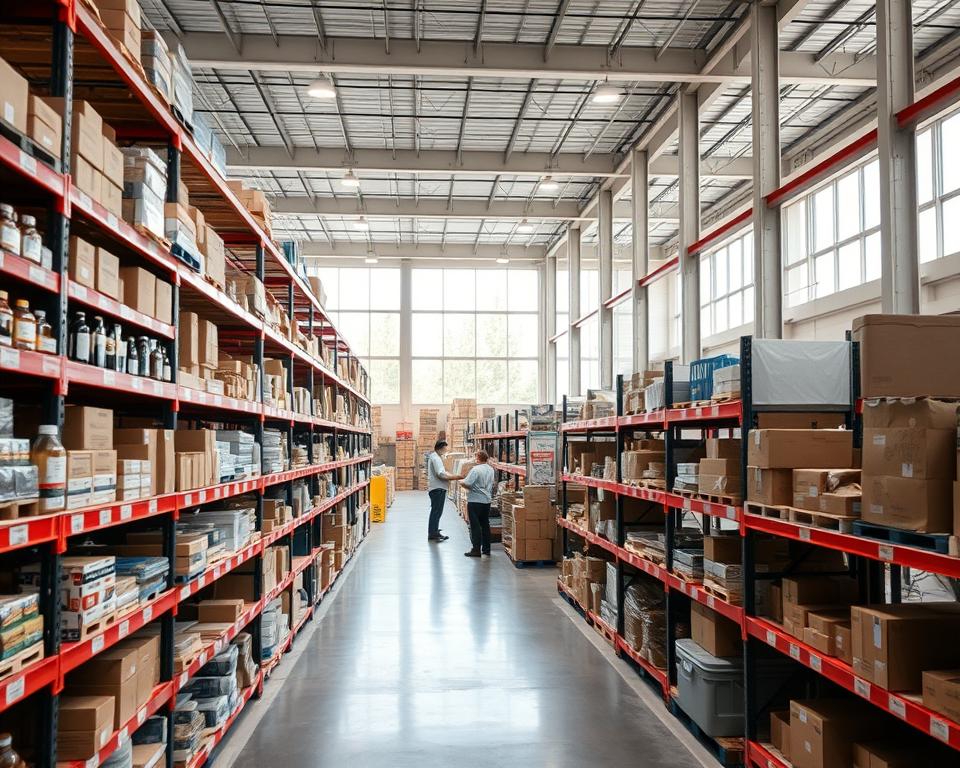Highest-Rated New York SEO Services for Development
Have you heard that 93% of online experiences commence with a search platform? This datum emphasizes the vital function of SEO in the current online landscape. Marketing 1on1, a foremost New York SEO company, dedicates itself to boosting businesses through customized SEO solutions. In the rivalrous New York City market, working with a premier SEO firm is not just beneficial—it’s essential for online success. A seasoned New York SEO can develop approaches that enhance your digital presence and increase user engagement and conversions.
Effective SEO strategies empower businesses to utilize search engines to reach their target market. When exploring SEO principles, you’ll recognize its significance for your company and how it can propel growth.
Summary Points
- 93% of online experiences start with search platforms.
- SEO is vital for business visibility in competitive marketplaces.
- Personalized SEO plans lead to improved user interaction.
- Engaging a premier SEO agency NYC drives company expansion.
- City-specific SEO solutions can substantially enhance your online presence.
Grasping SEO & Why It Matters
Search engine optimization, or SEO, is vital to boosting your business’s online presence. In New York’s rapidly moving market, a solid SEO strategy can make you stand out. Over 53.3% of site users arrive through organic search, emphasizing the necessity for effective SEO for lasting development.
What is SEO?
SEO entails techniques to boost your website’s ranking on search engine results pages. It comprises tuning content, site structure, and employing various strategies. The primary goal is to grow unpaid visits, boosting conversions and user retention.
Why SEO Is Crucial
Grasping the value of SEO can propel your company forward. Customers commonly use search engines to find services. By employing SEO solutions in NYC, your brand becomes more visible when customers look up pertinent keywords. This leads to more website traffic, generating more leads and sales.

Why Keywords Matter
Keywords are central to any SEO strategy, connecting user searches with business content. Thorough keyword research is essential. It drives content plans and reveals popular search terms. Working with a top SEO agency in NYC can uncover these insights, customizing your plan for better visibility.
Robust SEO blends technical skills with strategic thinking. By focusing on detailed keyword strategies and analyzing user intent, businesses can use SEO as a powerful growth tool.
Why Hire an NYC SEO Agency?
Opting for a New York SEO company offers numerous advantages for enhancing your online presence. These agencies have profound knowledge into the NYC landscape, crafting strategies that meet the distinct requirements of businesses here. By partnering with NYC SEO specialists in New York City, you access their vast expertise of customer habits and market trends.
Regional Insights
New York SEO firms have a deep grasp of the local market. Their know-how allows them to develop approaches that resonate with local customers. In a varied market like New York City, having specialists who know the local nuances can greatly improve a company’s visibility and relevance.
Access to Top Talent
Opting for affordable SEO solutions in NYC means accessing some of the industry’s best talent. Many New York SEO agencies hire experts in various SEO disciplines. This team is skilled in using the most advanced methods to improve your site performance, resulting in improved visibility.
Partnership Prospects
Working with a New York SEO company opens up beneficial connections. These firms frequently have links with NYC enterprises, key figures, and media outlets. These connections can result in partnerships that boost your marketing efforts, allowing you to reach new audiences and expand your business.
Key Services Offered by New York SEO Companies
New York SEO agencies offer a variety of critical services aimed at boosting online presence and driving more traffic to online properties. Working with a leading SEO firm in NYC means embracing a variety of approaches for comprehensive SEO efforts. These tactics include on-page SEO, off-page SEO tactics, and technical SEO practices.
On Page SEO Tactics
This offering focuses on optimizing single pages to boost their search rankings. It includes optimizing copy, title tags, meta tags, and internal linking structures. A experienced SEO agency in New York will meticulously tweak each component to attract both visitors and search engines.
External SEO & Backlinking
Off-page SEO is essential for enhancing your site’s authority and reputation. Acquiring high-quality links from trusted sites improves your search visibility. New York SEO firms leverage their extensive networks to secure links that strengthen your branding and search positions.
Technical SEO Insights
This aspect addresses optimizing a website’s backend for optimal performance and crawler friendliness. It may include accelerating load times, improving mobile compatibility, and ensuring proper crawling. A reputable SEO company in NYC will provide the technical know-how for exceptional results.
| Service Type | Description | Impact on SEO |
|---|---|---|
| On-Page SEO | Refining content & metadata | Improved rankings |
| Off-Page SEO | External backlink strategies | Increased authority |
| Technical SEO | Backend performance optimization | Improved UX |
How to Select the Right New York SEO Company
Choosing the ideal SEO company is vital for your business’s digital achievements. Consider key factors to guide your choice. Assess the agency’s track record and reputation, inquire that match your objectives, and review case studies that demonstrate their SEO achievements in New York.
Assessing Experience and Reputation
Proven success is essential when picking the best SEO agency in New York. Seek out companies with a history of successful campaigns. A reputable agency will openly discuss its past work and results. Their online presence, including testimonials, offers useful information into their effectiveness and credibility.
Asking the Right Questions
Compile a set of questions for your discussion with SEO providers. Ask about their approaches, software, and success metrics. This will assist you determine if they can achieve your goals. Don’t forget to discuss communication to guarantee seamless collaboration.
Role of Testimonials
Project examples are a strong indicator of a agency’s expertise. Review their past work to see their problem-solving and innovation. Identify measurable outcomes and on-time delivery in their case narratives. Together with client reviews will help you validate your SEO choice in New York.
SEO Campaign Workflow
Starting an SEO initiative needs a clear, step-by-step process. The best SEO firms in New York offer a detailed, open roadmap. This covers an initial consultation, the creation of custom strategies, and ongoing monitoring. Understanding this workflow can significantly improve the outcomes of SEO campaigns in New York.
Kickoff Meeting & Assessment
The initial phase is a thorough discussion. Experts evaluate the your digital standing and business objectives. They also review competitors and market trends. This groundwork is essential for developing a plan that meets market standards.
Executing the Plan
After the analysis, the subsequent phase is to implement the strategies. Based on findings from the initial meeting, customized SEO tactics are rolled out. These tactics involve optimizing website content, enhancing architecture, and using specific keywords. This guarantees businesses are more visible in a competitive market.
Performance Monitoring
Continuous tracking is vital to assess the success of SEO campaigns. Periodic updates provide data into performance metrics. This enables businesses to observe the immediate impact of their tactics. It also highlights areas for enhancement, keeping them on track.
Local SEO Approaches
New York companies encounter distinct challenges and opportunities in local SEO. Targeted strategies can significantly enhance their presence in a rivalrous market. Working with local SEO specialists in New York City offers insightful insights into optimizing these approaches successfully.
Google My Business Essentials
Google My Business (GMB) is a essential element of local SEO. Claiming and enhancing your GMB listing helps you appear in map listings. This can generate more in-store visits and digital leads. Images, business hours, and ratings are crucial in how customers view your company.
Ensuring correct details is essential for optimal exposure.
Using Local Keywords Effectively
Local keywords are vital for attracting relevant traffic to New York companies. Using region-focused keywords improves SERP positions and boosts the chance of reaching local audiences. Partnering with local SEO experts in New York City can help identify the best-performing local keywords for your business.
This customized approach boosts your online presence and engages your ideal customers more precisely.
SEO & Content Synergy
Integrating content strategy with SEO is essential to boosting digital visibility. High-impact materials grabs interest and meets SEO objectives. It generates traffic and customer actions, improving your brand’s visibility.
Engaging Content Strategies
Your marketing strategy should focus on content that resonates. Top-tier articles, blogs, videos, and infographics engage visitors with useful insights. Using pertinent keywords from SEO services in New York enhances your content’s ranking.
Focus on narrative and UX to make content more appealing. This approach elevates interaction.
Content for SEO Success
Content marketing supports SEO goals by strategic keyword use. Keywords enable your content to target a wider audience and improve domain credibility. A top SEO company understands the value of aligning content with search engine algorithms.
Well-crafted materials for target keywords generate organic traffic. This boosts your likelihood of higher rankings, enhancing your online presence.
SEO & Social Integration
In the current online landscape, social media is a major contributor in enhancing search engine optimization in New York. Companies leverage various platforms to amplify their exposure, connect with their followers, and build a strong online presence. This combination of social media and SEO is essential for driving site visits and boosting brand awareness.
Building Brand Recognition
Effective social media deployment can significantly boost brand awareness among prospective customers. By sharing valuable content and engaging with audience, businesses can create a community around their brand. Compelling visuals, targeted campaigns, and attention-grabbing posts assist spread the word. A leading SEO firm can design plans to amplify social media impact. This makes sure your company not only shows up on SERPs but also resonates with the customers.
Directing Followers to Your Site
Linking social media pages to your company site can substantially boost visits and enhance search rankings. By regularly posting content that directs back to the site, such as posts or promotions, followers are motivated to check out the website. Social signals—like likes, reposts, and replies—positively affect search rankings. Businesses aiming to optimize their online presence should integrate social media tactics with SEO practices in New York.
Typical SEO Errors
Many businesses fall into common traps that can undermine their SEO efforts. It’s vital to be aware of these mistakes to maximize your SEO approach. Two key errors include overlooking mobile SEO and neglecting user experience. Both are essential for success with budget-friendly SEO solutions or other SEO offerings.
Ignoring Mobile-Friendly Design
With over 61% of searches conducted on mobile devices, mobile optimization is essential. A mobile-friendly website improves accessibility and boosts search rankings. Ignoring this can cause higher bounce rates and reduced interactions. Adaptive layouts is key, allowing your site to adjust to different screen sizes.
Overlooking UX
User experience greatly affects SEO success. A website that’s hard to navigate, lagging, or overcrowded can annoy visitors and push them off. Concise CTAs, an intuitive layout, and fast loading times enhance user satisfaction. Focusing on UX keeps visitors engaged and signals to search engines that your site is relevant, improving rankings.
Tackling these common mistakes can significantly enhance your SEO strategy, making affordable SEO services NYC a valuable investment. Acknowledging the value of mobile SEO and UX helps companies succeed in the rivalrous New York market.
Evaluating SEO Performance
For companies looking to enhance their online presence, understanding the impact of SEO is critical. By tracking key performance indicators, businesses can measure the effectiveness of their SEO strategies. Collaborating with the best SEO firm ensures these indicators are closely monitored, enabling for informed refinements to SEO tactics.
Crucial KPI Metrics
Key performance metrics serve as benchmarks for evaluating SEO performance. Important metrics include:
- Organic Traffic: The amount of visits from search engines.
- Conversion Rates: The percentage of visitors performing target actions, such as orders or newsletter sign-ups.
- Keyword Rankings: The ranking of targeted keywords in search engine results.
- Exit Percentages: The percentage of users exiting after one page view.
Tools for Tracking SEO Metrics
Various platforms assist with monitoring these critical metrics, facilitating the assessment of SEO services. Some top options are:
- Google Analytics: A comprehensive tool for monitoring visitor behavior and user engagement.
- SEMrush: Ideal for keyword tracking and competitor benchmarking.
- Ahrefs: Excellent for backlink analysis and SEO audits.
- Google Search Console: Offers insights into site health and keyword performance.
Search Optimization Developments
Keeping up with industry trends is vital for companies aiming to boost their online visibility. A top-notch New York SEO firm will assist you amid the rapidly evolving world of search optimization. It’s critical to adapt to ranking shifts to keep your positions and exposure optimal.
Adaptation to Algorithm Changes
Search engines frequently update their algorithms, impacting website rankings. Working with the top SEO agency in New York keeps businesses ahead. By making strategic adjustments based on recent updates, companies stay at the forefront. Regular tracking and updates are essential to staying compliant these updates.
Optimizing for Voice Queries
Voice search is becoming more prevalent, changing how people query for information. Targeting voice search demands a unique approach versus standard SEO. By incorporating conversational keywords and query formats, visibility can be greatly boosted. Collaborating with a New York SEO firm that grasps these changes helps businesses create content for voice queries. This positions them advantageously in the evolving landscape.
Final Thoughts: Enhance Your Visibility
In today’s digital world, SEO is essential for business growth and exposure. A top SEO firm can steer you through the complex world of SEO. They ensure your company shines and thrives in a crowded environment. By investing in bespoke SEO services, your business acquires the tools and expertise to boost visibility and attract the ideal customers.
Building Long-Term SEO Relationships
Collaborating with an SEO company for the long haul can substantially enhance your digital visibility. Agencies like Marketing 1on1 specialize in evolving your SEO strategies. They respond to industry shifts and shifting consumer habits. This ongoing collaboration maintains your business relevant and ensures your efforts connect with your ideal customers, driving consistent traffic and engagement.
Staying Ahead of the Competition
To outmaneuver rivals in New York’s ever-changing environment, your business must prioritize SEO. The digital landscape is always changing, and committing to thorough SEO solutions keeps you at the forefront. By building strong partnerships with seasoned professionals, you can continuously refine your strategies. This boosts your digital presence and secures the visibility you require.








